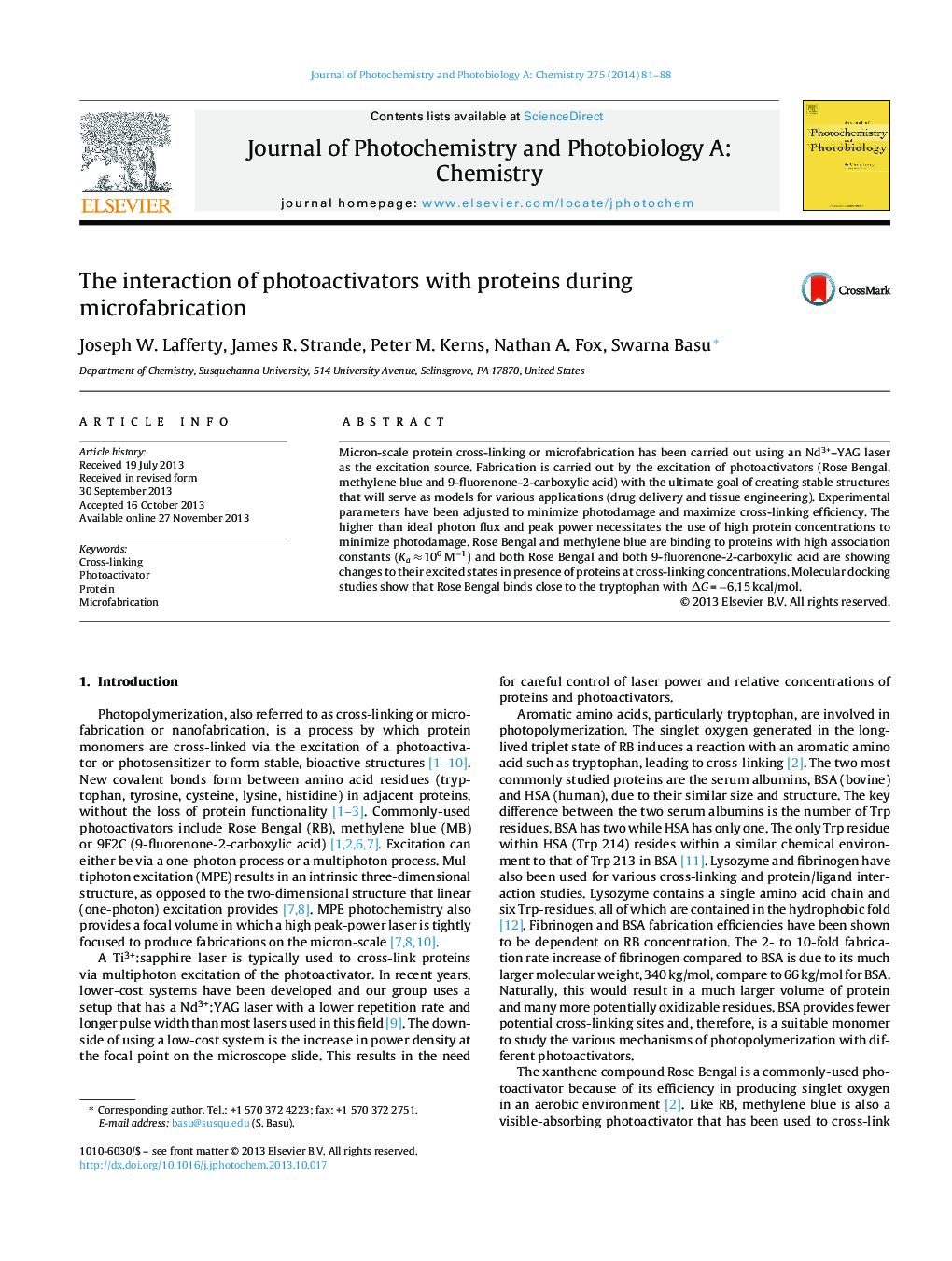| کد مقاله | کد نشریه | سال انتشار | مقاله انگلیسی | نسخه تمام متن |
|---|---|---|---|---|
| 26315 | 43946 | 2014 | 8 صفحه PDF | دانلود رایگان |
• Microfabrication of proteins has been achieved with high peak powers.
• Some photoactivators bind to proteins with high association constants.
• Some photoactivators show changes to their excited state at cross-linking concentrations.
Micron-scale protein cross-linking or microfabrication has been carried out using an Nd3+–YAG laser as the excitation source. Fabrication is carried out by the excitation of photoactivators (Rose Bengal, methylene blue and 9-fluorenone-2-carboxylic acid) with the ultimate goal of creating stable structures that will serve as models for various applications (drug delivery and tissue engineering). Experimental parameters have been adjusted to minimize photodamage and maximize cross-linking efficiency. The higher than ideal photon flux and peak power necessitates the use of high protein concentrations to minimize photodamage. Rose Bengal and methylene blue are binding to proteins with high association constants (Ka ≈ 106 M−1) and both Rose Bengal and both 9-fluorenone-2-carboxylic acid are showing changes to their excited states in presence of proteins at cross-linking concentrations. Molecular docking studies show that Rose Bengal binds close to the tryptophan with ΔG = −6.15 kcal/mol.
Figure optionsDownload as PowerPoint slide
Journal: Journal of Photochemistry and Photobiology A: Chemistry - Volume 275, 1 February 2014, Pages 81–88
